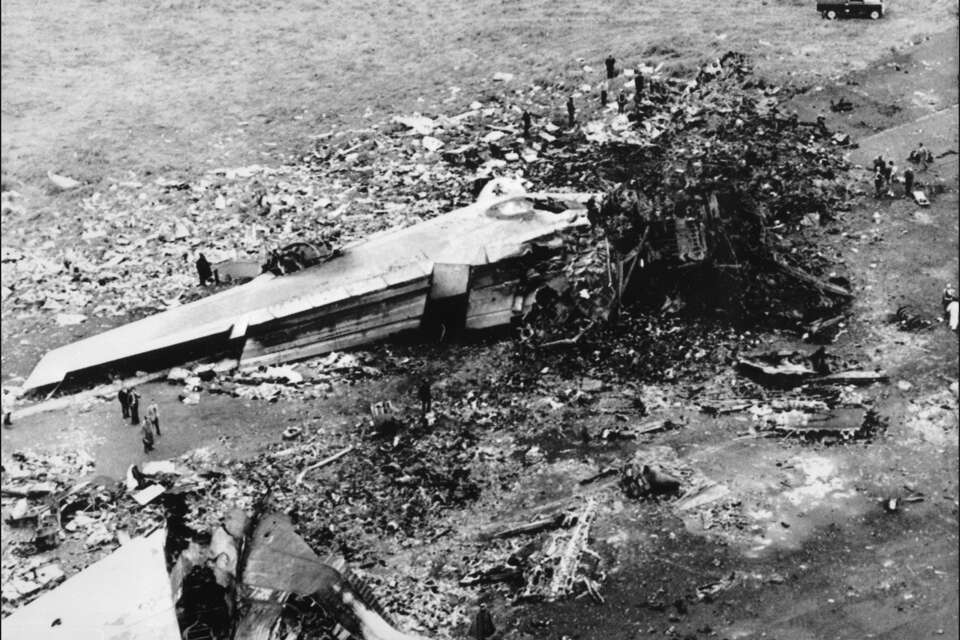Today marks the 48th anniversary of one of the darkest days in aviation history, a tragedy that claimed 583 lives and remains the deadliest accident in civil aviation.
On March 27, 1977, two Boeing 747 jumbo jets collided on the runway of Los Rodeos Airport in Tenerife, Canary Islands, leaving an indelible mark on global air travel.
The catastrophic crash involved a Dutch KLM flight and an American Pan Am flight, both packed with passengers—many of whom were tourists, including Americans bound for a Mediterranean cruise aboard the Golden Odysseus, with planned stops in Crete and Piraeus. What unfolded that foggy afternoon was a chain of fateful errors, miscommunications, and unexpected events that turned the small island airport into a scene of unimaginable horror.

A Bomb and a Human Error
According to Greek newspaper Ta Nea the day after the disaster, “Approximately 600 people were killed yesterday afternoon in the greatest disaster in the history of civil aviation, when two giant ‘Jumbo 747s’ collided—one taking off, the other taxiing on the runway.” The KLM plane was accelerating for takeoff when it smashed into the Pan Am aircraft, still on the runway, transforming the scene into what news agency Cifra described as a “hell of flames.”

The tragedy’s roots trace back to a bomb explosion at Las Palmas Airport, 50 miles away, set off by Canary Islands independence fighters in a flower shop. As reported by To Vima on March 29, 1977, this attack forced both planes—originally destined for Las Palmas—to divert to Tenerife’s overcrowded and ill-equipped Los Rodeos Airport. Dense fog blanketed the runway, and a fatal miscommunication sealed their fate.

Investigations later revealed that the Pan Am pilot, Captain Victor Grubbs, misunderstood air traffic control instructions and taxied onto the wrong path, while the KLM pilot, eager to depart, began takeoff without clearance. The “black box” from the Pan Am plane showed Grubbs believed he was following orders, slowly moving through the fog—unaware that the KLM jet was barreling toward him at 150 miles per hour.

Survivors’ Harrowing Tales
Among the few survivors was James Naik, who told Ta Nea, “The whole plane was burning, people were screaming and struggling to get out. It was like an electric shock, so fast. In seconds, the metal started splitting.” Naik managed to free himself after an explosion rocked the fuel tanks, though his wife survived with severe injuries. Another survivor, John Charles Amador, recalled to his father, “I looked down the aisle and suddenly saw the KLM plane coming straight at me. I bent double, head between my knees, and heard the terrifying crash.”

Of the 583 victims, nearly 90% were burned beyond recognition, their bodies piled into an airport hangar by rescue crews battling dramatic weather conditions. The planes, filled with holidaymakers, erupted into flames, leaving little chance for escape.

A Wake-Up Call for Aviation
The Tenerife disaster exposed critical flaws in air traffic control systems. British magazine Flight noted that the collision highlighted “weaknesses in control systems,” a view echoed by Spain’s head of air traffic control, who had warned of deficiencies at holiday destination airports just a week earlier. Poor audio quality in communications compounded the tragedy: KLM pilots heard only “OK” from the tower’s “OK, wait for takeoff,” prompting their fatal move.
The aftermath spurred sweeping changes in aviation safety worldwide:
– Standardised English phrases became mandatory.
– The word “OK” was banned from air traffic control vocabulary.
– “Takeoff” is now used only when clearance is given, with “departure” used otherwise.
– Commands to planes on runways must include “hold position” until takeoff is approved.
A Lasting Legacy
For Greeks, the disaster resonates as a reminder of the fragility of travel, with many victims en route to beloved destinations like Crete. As the world reflects on this day in 1977, the Tenerife tragedy stands as both a sombre memory and a catalyst for the safer skies we navigate today.
(Source: To Vima)

